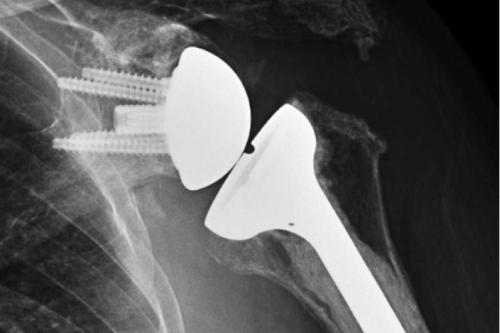
Engineered compound shows promise in preventing bone loss in space
A new study published in a Nature Partner Journal, npj Microgravity, finds an engineered compound given to mice aboard the International Space Station (ISS) largely prevented the bone loss associated with time spent in space. The study, led by a transdisciplinary team of professors at the University of California at Los Angeles (UCLA) and the Forsyth Institute in Cambridge, Massachusetts, highlight a promising therapy to mitigate extreme bone loss from long-duration space travel as well as musculoskeletal degeneration on Earth.
Microgravity-induced bone loss has long been a critical concern for long-term space missions. Decreased mechanical loading due to microgravity induces bone loss at a rate 12-times greater than on Earth. Astronauts in low Earth orbit may experience bone loss up to 1% per month, endangering astronaut skeletal health and increasing risk for fractures during long-duration spaceflight and later in life.
The current mitigation strategy for bone loss relies on exercise-induced mechanical loading to promote bone formation but is far from perfect for crewmembers spending up to six months in microgravity. Exercise does not always prevent bone loss, takes up valuable crew time, and may be contraindicated for certain types of injuries. The new study led by Chia Soo, MD, vice chair for research in the Division of Plastic and Reconstructive Surgery, professor in Departments of Surgery and Orthopaedic Surgery at UCLA David Geffen School of Medicine, investigated whether systemic delivery of NELL-like molecule-1 (NELL-1) can reduce microgravity induced bone loss. Discovered by Kang Ting, DMD, DMSc at the Forsyth Institute, NELL-1 is crucial for bone development and bone density maintenance. Professor Ting also led numerous studies to show that local delivery of NELL-1 can regenerate musculoskeletal tissues such as bone and cartilage.
Systemic delivery of NELL-1 aboard the ISS requires the team to minimize the number of injections. Ben Wu, DDS, PhD and Yulong Zhang, PhD at the Forsyth Institute enhanced NELL-1's therapeutic potential by extending the molecule’s half-life from 5.5 hours to 15.5 hours without losing bioactivity, and bioconjugated an inert bisphosphonate (BP) to create a “smart” BP-NELL-PEG molecule that more specifically targets bone tissues without the common deleterious effects of BP.
The modified molecule was then extensively assessed by the Soo and Ting teams to determine the efficacy and safety of BP-NELL-PEG on earth. They found that BP-NELL-PEG displayed superior specificity for bone tissue without causing observable adverse effects.
To ascertain the practical applicability of BP-NELL-PEG in real space conditions, the researchers worked with Center for the Advancement of Science in Space (CASIS) and National Aeronautics and Space Administration (NASA) Ames to prepare extensively for the SpaceX CRS-11 mission to the ISS, where astronauts Peggy Whitson, PhD and Jack D. Fisher, MS carried out the studies. Half of the ISS mice were exposed to microgravity (“TERM Flight”) for a lengthy 9-week period to simulate the challenges of long-duration space travel, while the remaining mice were flown back to Earth at 4.5 weeks post-launch, for the first ever live animal return (“LAR Flight”) of mice in US history. Both TERM and LAR Flight groups were treated with either BP-NELL-PEG or phosphate buffered saline (PBS) control. An equivalent cohort of mice remained at the Kennedy Space Center and were treated similarly with BP-NELL-PEG or PBS to serve as normal Earth gravity (“Ground”) controls.
Both Flight and Ground mice treated with BP-NELL-PEG exhibited a significant increase in bone formation. The treated mice in space and on Earth displayed no apparent adverse health effects.
“Our findings hold tremendous promise for the future of space exploration, particularly for missions involving extended stays in microgravity,” said lead corresponding author Chia Soo. “If human studies bear this out, BP-NELL-PEG could be a promising tool to combat bone loss and musculoskeletal deterioration, especially when conventional resistance training is not feasible due to injuries or other incapacitating factors,” said co-co-principal investigator, Kang Ting.
“This bioengineering strategy can also have important benefits on Earth, offering a potential therapy for patients suffering from extreme osteoporosis and other bone-related conditions,” said co-co-principal investigator, Ben Wu.
“As the next step, UCLA project scientist, Pin Ha, MD, DDS, MS, is overseeing analysis of the live animal return data. We hope this will provide some insight on how to help future astronauts recover from longer duration space missions,” said Chia Soo.
The research is supported by grants from CASIS and National Institutes of Health. Additional funding and support are provided by UCLA Division of Plastic and Reconstructive surgery, UCLA Department of Surgery, UCLA Department of Orthopaedic Surgery and the UCLA Orthopaedic Hospital Research Center, the American Association of Orthodontists Foundation, and the International Orthodontics Foundation. Pin Ha and Yulong Zhang, and associate professor Jin Hee Kwak, DDS, are co-first authors and contributed equally to this project.
Chia Soo, Kang Ting, Benjamin Wu, Xinli Zhang, and/or Zhong Zheng are inventors on Nell-1and/or Cntnap4 related patents assigned to UCLA. Chia Soo, Kang Ting, Benjamin Wu, and Xinli Zhang hold equity in Bone Biologics Inc./Bone Biologics Corp. which sublicenses Nell-1 patents from the UC Regents, and also hold equity in the company.
Article: Bisphosphonate conjugation enhances the bone-specificity of NELL-1-based systemic therapy for spaceflight-induced bone loss in mice, https://www.nature.com/articles/s41526-023-00319-7. DOI: 10.1038/s41526-023-00319-7.
